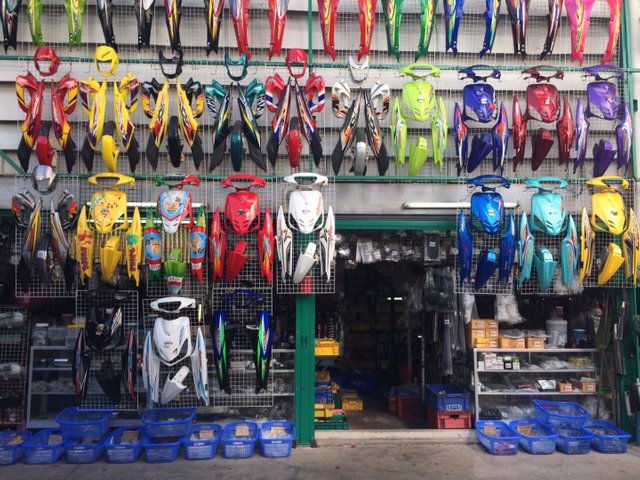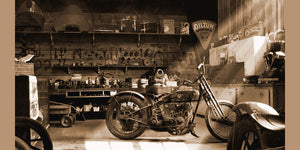Your Best Motorbike Shop for Top Quality Parts and Accessories
Your Best Motorbike Shop for Top Quality Parts and Accessories
Blog Article
Mastering Motorcycle Gears: How to Optimize Your Riding Experience
In the realm of motorcycling, grasping the art of gear manipulation is important for improving your riding performance. Properly understanding and making use of motorbike gears can dramatically impact acceleration, gas, and control effectiveness, transforming an ordinary adventure right into a seamless, exhilarating trip. By integrating exact shift timing and adapting equipment choice to various roadway conditions, riders can make certain ideal engine efficiency and safety. The subtleties of clutch control, throttle sychronisation, and gear technicians beckon a much deeper expedition, promising to open the full possibility of your maker. How can these strategies be taken advantage of to truly maximize your riding experience?
Recognizing Equipment Mechanics
Just how do the details of equipment mechanics influence motorbike efficiency? At the core of bike characteristics, equipment technicians play an essential duty in converting engine power into motion, inevitably determining rate and control. Gears, carefully crafted parts, permit motorcyclists to maximize torque and speed, making sure a seamless shift through different terrains and speeds. The gear ratios, thoroughly developed, establish the partnership in between engine transformations and wheel turns, impacting acceleration and gas efficiency.
Understanding gear mechanics begins with recognizing the importance of the transmission, which houses numerous gears of differing dimensions. These equipments connect through a process referred to as meshing, where teeth of different gears engage to transfer power. The precision of this communication is important; any imbalance or damage can result in inefficient power transfer, impeding performance. Additionally, the arrangement and dimension of equipments affect the motorcycle's ability to manage various lots and rates.
Moreover, the idea of equipment shifting is indispensable to making the most of efficiency. Timely and smooth shifts make certain that the engine operates within its ideal power band, avoiding unneeded pressure and enhancing durability (motorcycle shop). By understanding these mechanical details, bikers can attain a harmonious blend of power, control, and performance, boosting their riding experience
Timing Your Shifts
Shift timing mastery is crucial for optimizing motorcycle efficiency and enhancing the riding experience. Appropriately timed changes make certain that the engine runs within its optimal power band, which is essential for preserving control, accomplishing smooth velocity, and guaranteeing the durability of the bike. Bikers need to establish an intuitive sense of when to move equipments, which involves understanding the relationship between engine revolutions per minute (RPM) and speed.
To master shift timing, pay attention to the engine's sound and feel, as these provide important clues about when to change equipments. When the engine comes close to the top variety of its power band without reaching the redline, the optimal shift point typically takes place - moto parts nz. Changing prematurely can result in a lack of power, while changing also late might trigger unnecessary engine pressure
In addition, roadway conditions and riding style impact shift timing. In contrast, throughout highway riding, fewer shifts at greater rates can be much more ideal.
Enhancing Fuel Performance
While grasping motorcycle gears is critical for efficiency, enhancing fuel performance is equally crucial for both environmental and economic reasons. Optimum fuel usage not just reduces operational prices however additionally reduces the eco-friendly footprint of riding. To achieve this, one need to recognize the intricate connection in between equipment selection and engine performance.
Riding in a greater gear at lower speeds can lead to engine hauling, which is detrimental to both fuel economic situation and engine wellness. Alternatively, riding in lower gears at high speeds results in unnecessary fuel intake.
In addition, normal upkeep plays an essential function in fuel efficiency. Guaranteeing that the motorcycle is well-tuned, with clean air filters and correctly inflated tires, can enhance the rules of aerodynamics and minimize gas waste. Adopting website here a riding design that accepts gradual velocity and smooth deceleration can contribute to far better fuel economy.

Strategies for Smooth Transitions
Accomplishing smooth equipment shifts is fundamental to boosting the riding experience and guaranteeing the long life of a motorbike's transmission system. Proper equipment moving not just contributes to a smooth trip yet likewise decreases deterioration on the mechanical parts. To grasp the art of smooth shifts, riders need to focus on a couple of key methods.

Secondly, clutch control plays an essential role. Engaging and disengaging the clutch efficiently calls for technique. The clutch lever ought to be launched progressively, permitting a seamless transfer of power from the engine to the wheels without causing a jolt or sudden activity.

Adapting to Road Problems
Browsing varied roadway problems is an important ability for any type of motorcyclist intending to preserve control and security. Whether you're riding on wet surfaces, gravel roads, or browsing doglegs, your capacity to adapt your gear use and riding method is vital. Comprehending exactly how to adjust your gears appropriately can significantly influence grip and stability, guaranteeing a safer trip.
In contrast, when riding on crushed rock or uneven surface, lower equipments are more effective. Lower equipments provide far better control and allow you to react more quickly to unforeseen changes in the roadway surface.
Sharp contours require accurate equipment administration to you can look here stabilize speed and control. Downshifting prior to entering a contour can aid maintain energy while ensuring the motorbike remains steady throughout the turn. Regular practice in diverse conditions improves your capacity to predict and react to changes in roadway texture and slope.
Conclusion
Mastering motorcycle gears considerably enhances the riding experience by enhancing fuel, control, and acceleration effectiveness. Adjusting equipment selection to different roadway problems, such as utilizing greater gears on wet surfaces and reduced equipments on gravel, further enhances handling and safety.
Understanding equipment technicians starts Web Site with acknowledging the importance of the gearbox, which houses numerous equipments of varying dimensions. These gears communicate through a procedure recognized as meshing, where teeth of different gears involve to transfer power (motorbike shop). Gentle adjustments to the throttle throughout gear changes can protect against jerky movements and keep a constant riding pace
Whether you're riding on damp surface areas, gravel roadways, or navigating sharp turns, your capacity to adjust your gear use and riding method is paramount. Adjusting equipment choice to different roadway conditions, such as using greater gears on damp surfaces and reduced gears on crushed rock, further boosts handling and safety.
Report this page